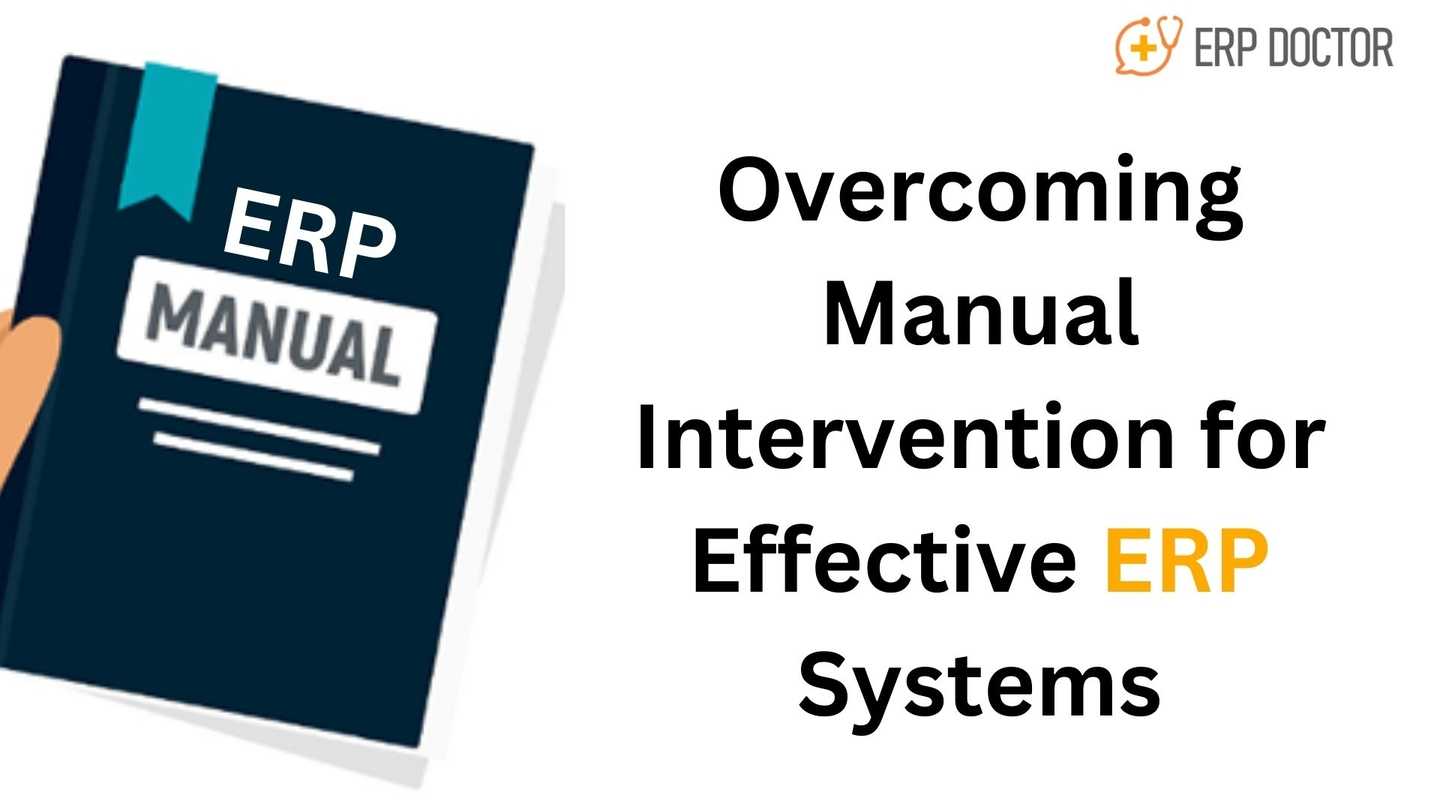
Overcoming Manual Intervention for Effective ERP Systems

ERP Integration: Is Manual Data Entry Holding You Back?
Companies continually seek ways to streamline operations and improve efficiency in the business world. One of the significant challenges many businesses face is overcoming manual intervention in their processes. Manual intervention often serves as a red flag, indicating the need for better integration with Enterprise Resource Planning (ERP) systems. This blog will explore how manual intervention can be reduced by integrating the systems with ERP, showcasing an example of integration to avoid human errors, HR integration, and machine integration can help businesses minimize manual intervention, boosting overall efficiency and productivity.
Understanding Manual Intervention in Business Processes
Manual intervention refers to the necessity for human involvement in processes that could otherwise be automated. This need for human input often results in increased errors, slower processing times, and higher operational costs. Identifying areas where manual intervention is prevalent is crucial for businesses aiming to optimize their workflows and integrate more seamlessly with ERP systems.
The Role of Reducing Manual Intervention with ERP Systems
ERP systems are designed to centralize and automate business processes, ensuring that data flows seamlessly across various departments. When integrated correctly, these systems can significantly reduce the need for manual intervention by automating routine tasks and providing real-time data access.
Benefits of ERP Integration by reducing manual errors:
- Improved Data Accuracy: Automated data entry and processing reduce the risk of human errors, ensuring more accurate and reliable data.
- Enhanced Efficiency: Automating routine tasks speeds up processes, allowing employees to focus on more strategic activities.
- Cost Savings: Reduced need for manual intervention translates to lower labor costs and fewer resources spent on rectifying errors.
- Better Decision Making: Real-time access to data provides managers with the information they need to make informed decisions quickly.
HR Integration: Streamlining Human Resource Processes
Human Resource (HR) integration with ERP systems is a critical step in reducing manual intervention. By automating HR processes, businesses can enhance efficiency and ensure better data consistency across the organization.
Key Areas of HR Integration with ERP:
- Recruitment and Onboarding: Automating the recruitment process, from posting job openings to onboarding new hires, can save time and reduce errors.
- Payroll Management: Integrating payroll with ERP systems ensures accurate and timely salary payments, reducing the need for manual calculations and data entry.
- Employee Self-Service: Providing employees with access to self-service portals allows them to manage their personal information, request leave, and access pay stubs without HR intervention.
- Performance Management: Automating performance reviews and tracking employee progress helps HR teams focus on strategic initiatives rather than administrative tasks.
Machine Integration: Enhancing Operational Efficiency
Machine integration with ERP systems is another vital component in minimizing manual intervention. By connecting machines and equipment directly to ERP systems, businesses can achieve real-time monitoring and control over their operations.
Advantages of Machine Integration:
- Real-Time Monitoring: Integrated machines provide real-time data on performance, allowing for immediate detection and resolution of issues.
- Predictive Maintenance: By analyzing machine data, businesses can predict maintenance needs and schedule repairs before breakdowns occur, reducing downtime.
- Optimized Production: Automated machines can adjust operations based on ERP data, optimizing production schedules and resource allocation.
- Quality Control: Integration helps maintain consistent product quality by automating quality checks and tracking production metrics.
Embracing automation and real-time data access will not only reduce errors and costs but also empower employees to focus on more strategic tasks, driving overall business success.
To learn more about our services, please visit us at: https://erpdoctor.in/
Embark on an inspiring journey today – Visit our website and discover a world of knowledge, creativity, and endless possibilities! Don’t miss out on exclusive content and exciting updates. Click here to explore and be part of our thriving community!







